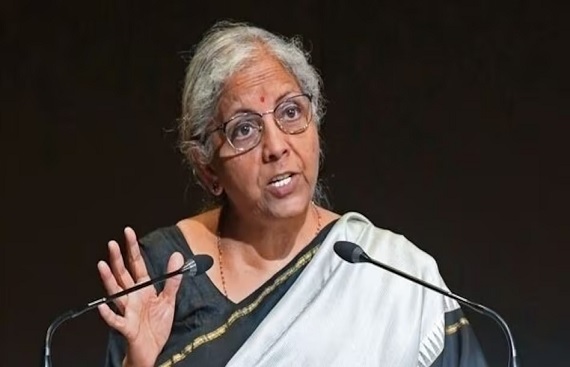85% Surge in Priority Sector Lending Signals a New Era for Indian Banking
By
siliconindia | Wednesday, 12 March 2025, 09:02:52 AM IST

In a big push to priority sector lending, the banks' total disbursement of credit jumped by 85% in the past six years from Rs 23.01 lakh crore in 2019 to Rs 42.73 lakh crore in 2024, Finance Minister Nirmala Sitharaman said. The steep rise reflects the efforts of the government and banking fraternity to promote key sectors such as agriculture, MSMEs, and social infrastructure.
The farm sector, the backbone of India's economy, registered a significant increase in credit release. Banks advanced Rs 8.86 lakh crore as loans to agriculture in 2019, which almost doubled to Rs 18.27 lakh crore by 2024. The amount is inclusive of credit extended for agricultural infrastructure, depicting continuous efforts at increasing productivity and rural development. Concurrently, lending to Micro, Small, and Medium Enterprises (MSMEs) also saw consistent growth, with disbursements going up from Rs 10.99 lakh crore in 2019 to Rs 21.73 lakh crore in 2024. The increase is testimony to the banking industry's role as the economic growth driver through entrepreneurship and small business growth, key drivers of employment and innovation.
Banks, while charting their way through a changing financial landscape, are coming together with FinTech companies more and more to enhance service delivery and customer experience. Some of the key innovations are digital account openings through e-KYC and V-KYC, and the use of AI for face recognition and name matching. These innovations facilitate faster customer onboarding, easier access to banking, and efficiency. Digital lending experiences have also become quicker and more precise, with FinTechs employing account statement analysis and alternative data for instant credit scoring. Also, API-based product development allows banks to provide customized financial solutions, which contribute to greater customer satisfaction and financial inclusion.
The Reserve Bank of India (RBI) is also watchful of ensuring regulatory compliance and financial stability. The central bank makes supervisory assessments on a sample basis to verify compliance with its instructions, rectifying any aberrations through corrective measures or enforcement actions, as the case may be. RBI’s regulatory framework, guided by the Banking Regulation Act, 1949, and the RBI Act, 1934, is designed to protect customer interests while maintaining financial system stability. To bolster risk management, RBI has implemented forward-looking and analytical supervisory practices. These measures help identify vulnerable sectors, high-risk borrowers, and financially unstable entities early, allowing for timely interventions to prevent systemic disruptions.
The RBI and the government have floated various steps for increasing the financial health of the banks, for encouraging sound lending, and also for lessening NPAs. Public Sector Banks have also put in place focused stressed asset management verticals as well as offices, facilitating concentrated and more efficient recovery activities. Utilizing the business correspondents and the model of 'feet-on-street' also increased the process of recovering NPA. The Prudential Framework for resolution of stressed assets promotes early identification and reporting of stressed accounts, encouraging banks to implement timely resolution strategies. Minimum provisioning norms for standard and non-performing advances have also been specified, so that banks have financial cushions against possible losses.
The implementation of the Insolvency and Bankruptcy Code (IBC) and the Central Repository of Information on Large Credits have strengthened credit discipline. These measures facilitate detection and action against wilful defaults and frauds, maintaining the integrity of the banking sector. Further, modifications to the Securitisation and Reconstruction of Financial Assets and Enforcement of Security Interest (SARFAESI) Act, 2002, and the Recovery of Debt and Bankruptcy Act have increased banks' recoveries from bad loans. Robust, systematic early warning systems have been implemented in order to identify early signs of financial distress and reduce slippages into NPAs.
The government's Enhanced Access & Service Excellence (EASE) reforms have propelled objective, benchmarked public sector bank improvements. The reforms emphasize governance, risk management, data-driven decision-making, and customer-centric service delivery. Strategic bank mergers further boosted sector efficiency through economies of scale and operating synergies. These collective initiatives have strengthened India's banking industry, enabling it to serve priority sectors more effectively, spur economic growth, and enable national development goals. With ongoing innovation, rigorous regulation, and responsive policymaking, the financial system is poised to address changing economic needs and empower India's future. This was stated by Union Finance Minister Nirmala Sitharaman in a written response to a question in the Lok Sabha.
Read More News :
Bharti Airtel Joins Forces with SpaceX to Bring Starlink Internet to India
PM MITRA Parks to Boost Textile Sector with Rs 18,500 Crore Investment



.jpg)